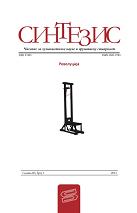Зашто XII век није створио макабристичке теме? (Од imago Dei до одраза трулежи)
Where was macabre in 12th century? (From imago Dei to the image of cadaver)
Author(s): Jakov ĐorđevićSubject(s): Cultural history
Published by: Центар за хуманистичке науке »Синтезис«
Keywords: medieval death; macabre; contemptus mundi; Christian humanism; transi tombs
Summary/Abstract: In the Middle Ages attitudes toward death were different than modern man would expect them to be. The image of cadaver was not strange theme to the medieval authors, especially not in literature from 12th to 15th century. However, in 12th century the image of cadaver had not been defined as macabre yet. Why is that so? The rise of the economy in 13th century Europe pushed medieval man into the arms of earthly pleasures. But, death interfered and brought bitterness to all life’s delights. Man in 14th and 15th century was strongly attached to the world and felt deep sorrow because of the transience of his fortune. For that reason he saw his reflection in the image of cadaver. The twelfth century monasteries were bathed in the atmosphere of Christian humanism. The Divine love was the ultimate goal, so every monk was encouraged to embrace the image of God within himself. This is the main reason why macabre sensibility could not have been part of 12th century religious thought – reflection of man did not reveal the image of corpse, but imago Dei.
Journal: Синтезис - часопис за хуманистичке науке и друштвену стварност
- Issue Year: III/2011
- Issue No: 1
- Page Range: 147-164
- Page Count: 17
- Language: Serbian

